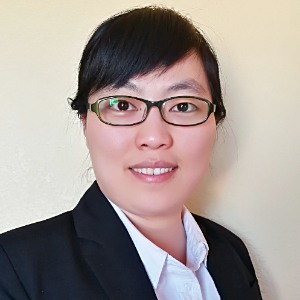Title : In situ preparation and characterization of bacterial cellulose/chitosan composites
Abstract:
Bacterial cellulose (BC), more recently referred to as bacterial nanocellulose (BNC), or microbial cellulose (MC), has been reported as an ideal scaffold for wound repair and tissue regeneration. BC, a natural three-dimensional nano-biomaterial fabricated via microbial fermentation with a fiber diameter around 14 nm, distinguishes itself from cellulose derived from other sources mainly by its purity, crystallinity, mechanical strength, three-dimensionality, high water holding capacity, and good biocompatibility. BC is found to be an effective transdermal carrier and drug delivery system, as well as bioscaffolds in the repair and regeneration of skin, blood vessel, cornea, heart valve, urethra, nerve, bone, cartilage? and knee menisci. Chitosan (CS), as a native alkali polysaccharide with non-toxic, biodegradable, and biocompatible properties, is well known to deliver drugs, proteins, and genes. An in situ preparation method was used to biosynthesize BC/CS composites. The results revealed that chitosan could be wrapped in a network of BC during its biosynthesis. The in situ composites formed cohesive gel structures in scanning electron microscopy (SEM) images. Differential scanning calorimetry (DSC) results indicated that the recrystallization temperature shifted to a lower temperature in the composites than that in plain BC. X-ray diffraction (XRD) analysis indicated that the highest degree of crystallinity occurred when the medium contained 2% chitosan. The in situ nanocomposites of BC/CS are promising for delivery systems in biomedical and pharmaceutical applications. From biosynthesized nanofibers using fermentation to synthesized nanofibers using micro/nano fabrication, our research aims to heal damaged skin tissues and applies in tissue engineering and nanomedicine.
Audience take away:
- The in situ composites of BC/chitosan were obtained forming a homogeneous and cohesive gel structure, by adding different chitosan to culture media.
- Due to the antimicrobial property of chitosan, the BC production decreased slightly with the increasing concentration of chitosan.
- The highest crystallinity was obtained in the in situ BC/2% CS composites.
- Via ionic conjugation of various therapeutic molecules, the in situ composites have a great potential for drug/growth factor delivery systems for wound healing.


